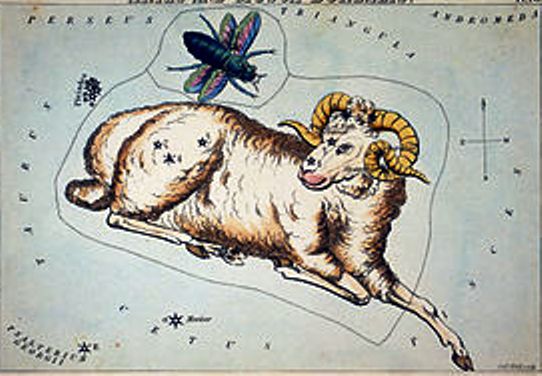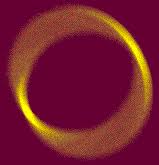
DRAUPNIR
and the Ring of Andvari
by Peter Krüger
©2012
[Germanic Astronomy]
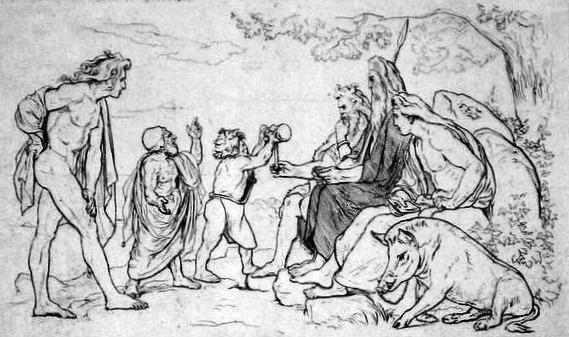
According to Skáldskaparmál the two dwarfs Sindri and Brokkr forged three precious objects for the gods: the hammer Mjöllnir, characterized by having a short handle, the boar Gullinborsti, whose mane glows in the dark and the ring Draupnir, able to produce 8 rings of equal weight every ninth night.
In a previous post, I
demonstrated that Mjöllnir may be represented in the
starry sky as the star cluster known as the Pleiades, which is laid out
in the
shape of a hammer. Similarly, the boar Gullinborsti can be explained by the stars
of Aries. This constellation consists of a few stars in the shape of
the mane of a boar (the other parts of the boar not being visible).
To further prove these identifications it would be necessary to find an explanation for the ring Draupnir. Actually this seems to be quite simple: Next to Aries we find the constellation of Pisces, the Fishes. The western fish consists of an asterism that is known in the English language area as the Circlet, the ring.
 |
Can we prove that this
circlet of stars is indeed a representaion of Draupnir? I think yes. The
key to a proof are the eight rings dropping out of Draupnir. If we look
on a star map there are indeed eight stars (!) visible with the naked
eye strung in a line between the star Al-Rischa and the Circlet, all of
them with similar brightness.
Therefore a fascinating conclusion is possible: Mjöllnir, Gullinborsti
and Draupnir represent the three succeeding constellations of Taurus
(with the Pleiades), Aries and Pisces, all along the zodiac.
 |
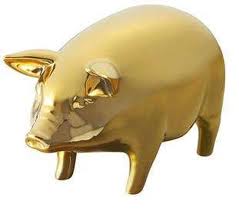 |
 |
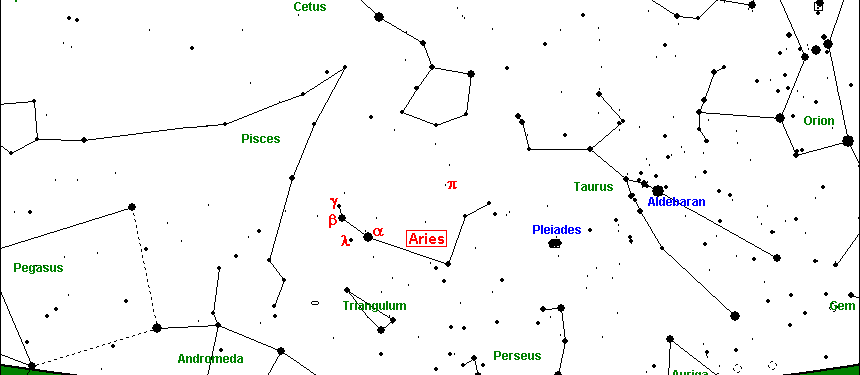 |
||
The story of Loki killing an otter carrying a fish in its mouth seems to link the interpretation of the Circlet as a ring with the Greek version of seeing it as a fish: the stars between Alrisha and the circlet form the body of the otter with the Circlet seen as a fish in its mouth. The otters live in a holt, which gives us a connection to Mimir's holt: the Pegasus square— Mimir's holt being above Mimisbrunnr: the urn of Aquarius.
Above I tried to show links between the constellation Piscis Austrinus with the dwarf Andvari in the shape of a pike, the stream of water pouring out of the urn of Aquarius with the Andvarafors, the Circlet of the western fish with Andvaranaut and the home of Andvari 'í steininn' with the Pegasus square.
If we find such a detailed scene in the sky, shouldn't we than be able to find also the net of Rán Loki casts in front of the pike?
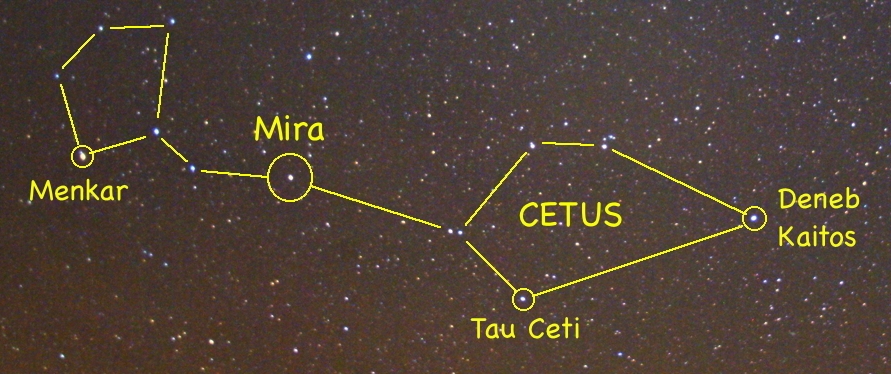 |
I think yes. Next to Piscis Austrinus we find the constellation of Cetus, the whale. The name Cetus goes back to an old Greek sea goddess: Keto, the beast of the sea. A connection between Keto and Rán lays at hand, both represent the dangers of the sea. And what about the net? If we look on a star map Cetus has a strange shape. Actually there seem to be two rings of stars connected by some others. I assume the western and bigger ring represents the net of Rán.
I assume there is also a connection
between Cetus, the sea beast, and Grendel and the mother of Grendel
in the Beowulf epos. This would get probability by seeing the
Pegasus square as the hall Heorot, 'the hall of the hart', 'the mead
hall'. This would be supported by the old constellation of the stag
MUL.LU.LIM of Sumerian sources next to the Pegasus square. But
that's another story.
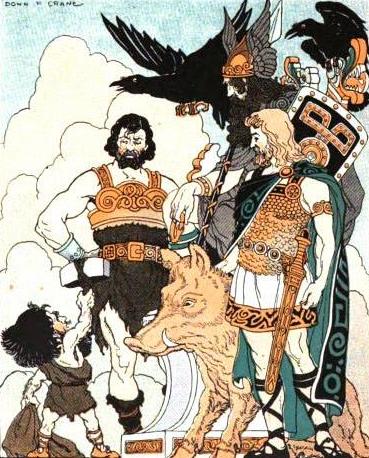
Brokk and Sindri and the Gadfly
The two dwarfs Sindri and Brokkr forged the hammer of Thor, the golden boar of Freyr, Gullinborsti, and the golden ring of Odin, Draupnir. Previously, I have identified these three items with the Pleiades, the constellation Aries and the Circlet of Pisces. Is it also possible to find the two smiths themselves?
Perhaps. At least there are some interesting details worthy of study. To forge the items the two dwarfs use a bellows. Sindri stands in front of the bellows, Brokkr behind it, where he is disturbed by a gad-fly biting him. Is it possible to find this scene in the starry sky?
Just above the first object forged, Gullinborsti (Aries), we find a constellation known since oldest times and named after it's characteristic triangular shape. It is known by the Romans and Greeks as Triangulum or Deltaton. In Babylonian and Sumerian sources it is known as a plough, again referring to the triangular-shape. The famous cuneiform star list MUL.APIN starts with this constellation (APIN=plough). So, is it possible that the Sumerian plough appears as a Germanic bellows in the starry sky?
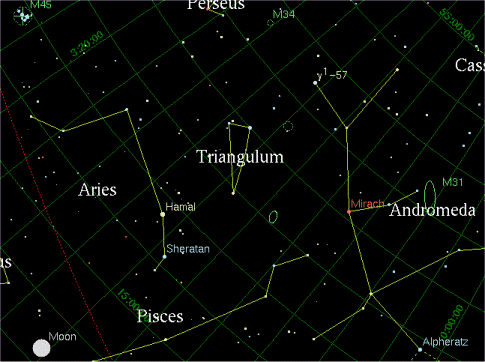 |
Recognizing that this is very speculative, I would even propose an interpretation of the single stars of Triangulum. From the three stars of Triangulum two (alpha and beta) are of similar brightness, the one in the third corner is of less intensity. Alpha-Trianguli is at the apex of the triangle, in the direction of Aries. The fainter star gamma-Trianguli is close to the star beta-Trianguli. Interestingly the star gamma-Trianguli has two very faint but visible stars as companions (just have a look at the star map of Triangulum). Are these the wings of the gadfly?
I therefore want to propose to identify
Sindri with alpha-Trianguli standing in front of the bellows, Brokkr
with beta-Trianguli behind the bellows and the gad-fly with
gamma-Trianguli biting Brokkr.
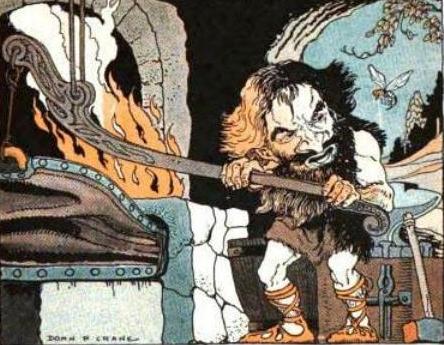 |
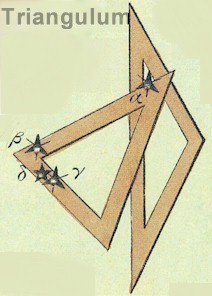 |
Interestingly it is not the only time that a gadfly is mentioned in star myths. When Bellerophon attempts to ride on the winged horse Pegasus to Mt. Olympus, the horse was stung by a gadfly and Bellerophon fell back to earth. And where is Pegasus located in the sky? Directly next to Triangulum.
Also of interest, Hevelius in his catalogue of 1690, places a constellation called Musca ('the fly'), between the constellations of Aries and Perseus. This constellation was later named Musca Borealis ('northern fly') to distinquish it from Musca Australis ('southern fly'). The same constellation was called Apis (the Bee) by Plancius in 1612, and Vespa ('Wasp') by Bartsch in 1624. The stars of this constellation are now included in Aries.
